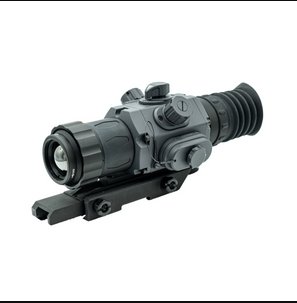Best Hunting Conditions for Using Thermal Vision Scopes
Hunting at night feels different. The world looks still, but it’s not. Animals move. Heat rises from the ground. Some things glow bright in a thermal scope, while others blend in. You expect a clear view, but sometimes, the image isn’t right.

Hunting at night feels different. The world looks still, but it’s not. Animals move. Heat rises from the ground. Some things glow bright in a thermal scope, while others blend in. You expect a clear view, but sometimes, the image isn’t right.
Thermal vision scopes work by picking up heat, not light. They don’t care about shadows or moonlight. But they don’t work the same in all places or at all times. Some conditions help. Others don’t. If you hunt with a thermal scope, knowing what affects it will save you from bad shots and missed targets.
How Weather Affects Thermal Vision Performance
Clear Nights vs. Fog and Rain
Dry air makes heat stand out. A warm body against a cool ground pops on the screen. Cold-blooded animals and hidden game are easier to spot. But when fog rolls in, things change. Water in the air bends heat waves. Rain scatters them. The image blurs. It’s hard to tell a hog from a rock.
Thermal vision scopes still work, but they need help. Turn up the contrast. Play with brightness. Try different color modes. A sharper image makes all the difference in bad weather.
Hot vs. Cold Temperatures
Cold makes thermal shine. A deer in the snow lights up like a torch. A coyote on a frost-covered field stands out. But on hot days, the ground holds heat. Trees, rocks, and dirt glow long after the sun sets. The whole world looks warm. Animals don’t stand out as much.
Best time to hunt? Right after sunset. The earth cools fast, but animals keep their body heat. They stay warm while everything else fades to black.
Terrain and Its Impact on Thermal Detection
Open Fields vs. Thick Woods
Wide open land makes hunting easier. There’s nothing to block the heat. You see a hog move from hundreds of yards away. Even small game shows up clear. The only problem? No cover for you.
Forests change the game. Trees break up the heat. Thick brush hides movement. The scope picks up heat, but not always the whole animal. You might see a glowing patch and not know what it is.
Rocks, Water, and Mud
Rocks bake in the sun all day. At night, they still hold heat. Your scope might pick up a warm boulder and make you think it’s an animal. Check for movement before pulling the trigger.
Wetlands can be strange. Water reflects heat. Patches of warm air rise from the surface. It can mess with your scope’s view. It is better to move slow and look twice to confirm. A bad shot in these spots wastes time and ammo.
Best Time of Day for Thermal Hunting
Night Hunting is the Sweet Spot
Darkness makes thermal shine. The air cools. The land fades to black. But animals keep their warmth. You don’t need light. The scope picks up heat like a beacon.
Game moves more at night. Hogs root through fields. Coyotes hunt. Deer shift from bedding spots to feeding grounds. You see them long before they see you.
Want an edge? Use a monocular first. Scan the area before lifting your rifle. It saves time and keeps your arms from getting tired.
Dawn and Dusk: The Best of Both Worlds
Morning and evening give the best contrast. The land cools, but animals stay warm. They move in the open more. It’s not as dark as midnight, but the scope still works great.
This is when you find game heading back to cover or stepping out to eat. It’s quiet. It’s still. And if you know what to look for, it’s the perfect time to take a shot.
Optimizing Your Thermal Scope for Different Conditions
Tweaking Settings for a Clearer View
No scope works right on default settings. Brightness and contrast need small tweaks. Some scopes let you switch color modes. White hot works well for warm nights. Black hot is better for cold ones.
Zoom can help but don’t overdo it. Digital zoom makes images grainy. Keep it low for a cleaner picture.
Battery Life and Power Management
Cold drains batteries fast. Always bring extras. If your scope takes a power pack, keep one in your bag. If you leave the scope on all night, it won’t last. Scan, then power down. Save energy for when you need it.
Conclusion
Hunting gets better when you know what helps and what hurts your scope’s view. Thermal vision scopes work best in cool air, dry weather, and open land. Rain and heat can make things tricky. Rocks, water, and thick woods can throw you off.
Fix what you can. Change settings. Pick the right hunting time. Use smart scanning. When you learn to read the heat, you stop guessing. You start hunting right.
What's Your Reaction?















.jpg)